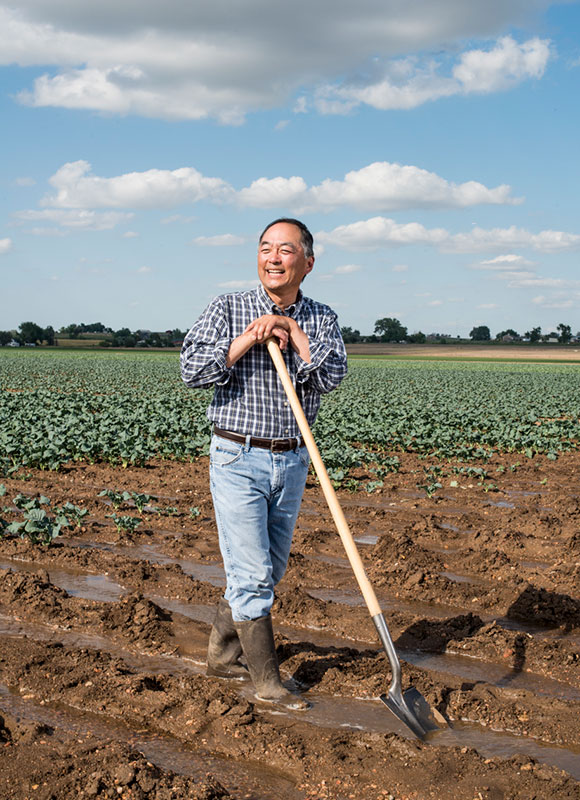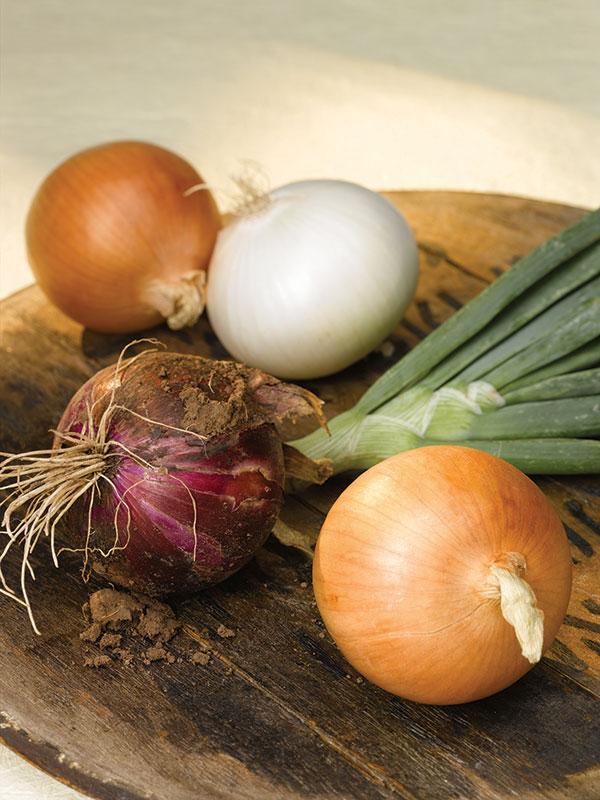
Farming Onions in an Ideal Desert
03 October 2018From a WW II Japanese internment camp to a Colorado desert onion farm, two generations of the Sakata family have found a home on the range.
By Thomas Smith, GMC Staff Writer
Farming a desert while starting from nothing sounds like a tough lot in life. Bob Sakata faced this challenge when he moved to Colorado in 1942 after his release from a World War II era Japanese American internment camp. However, Colorado’s friendly social atmosphere provided a warm welcome to many Americans who suffered internment, and the arid desert surrounding Brighton, Colo., is an ideal climate for onions to grow.
 Before arriving at the internment camp in Utah, Sakata owned a farm in San Francisco, where he honed his trade. Sakata’s struggles with poverty, personal hardship, and wartime prejudice are featured in his 2009 biography, Bob Sakata: American Farmer. Worn by life of hard work, Bob handed off many farming duties to his son, Robert. “Now it’s my mom and myself,” Robert Sakata said. “My dad is 92 years old and still comes to the office seven days a week. He’s amazing. I don’t think I’d be able to do that at 92 years old.”
Before arriving at the internment camp in Utah, Sakata owned a farm in San Francisco, where he honed his trade. Sakata’s struggles with poverty, personal hardship, and wartime prejudice are featured in his 2009 biography, Bob Sakata: American Farmer. Worn by life of hard work, Bob handed off many farming duties to his son, Robert. “Now it’s my mom and myself,” Robert Sakata said. “My dad is 92 years old and still comes to the office seven days a week. He’s amazing. I don’t think I’d be able to do that at 92 years old.”
However, Robert Sakata did not always aspire to the grower’s life. Sakata said when he graduated high school, becoming a farmer was the last thing he wanted to do. After college, Sakata worked as a genetic scientist but was ultimately discontented in his career. Then, he worked at other odd jobs before eventually returning to his farming roots.
 “When I graduated high school, I wanted to find a cure for cancer. But, (I found) the real opportunity was back on the farm growing the vegetables I had grown up growing,” the second-generation grower said. “I was thinking maybe that’s really where I wanted to be. So I came back and my parents welcomed me and I’ve been here ever since.”
“When I graduated high school, I wanted to find a cure for cancer. But, (I found) the real opportunity was back on the farm growing the vegetables I had grown up growing,” the second-generation grower said. “I was thinking maybe that’s really where I wanted to be. So I came back and my parents welcomed me and I’ve been here ever since.”
The pungent vegetable comes in several shapes and sizes. Onions usually range in size from one to five inches, which is determined by how far apart seeds are planted. Sakata’s farm grows all sizes of yellow onions, which account for approximately 87 percent of U.S. onion production. Onions can be grown all over the U.S. and each state has different growing methods tailored to its unique climate. The grower said he could practically drive down the road and find people using different farming techniques.
Onion growing is becoming increasingly technologically advanced, Sakata said, and even relies on drones. A farming drone can use infrared wavelengths to determine plant stress, and Sakata predicts that robots may be able to weed fields and count plants in the future. These innovations could revolutionize farming by making it less labor-intensive. However, he acknowledged that intangible things like his father’s knowledge of crop rotations would be hard to replace.
Growing an onion crop in the desert is the perfect location even though it might not seem that way, says Sakata. “But, in actuality, it’s ideal because if you have irrigation water then you can irrigate the crop when it needs it rather than having flooding.”
Although Brighton’s summers are short, cold winters reduce pest populations and snow deposits on the Rocky Mountains are a great source of irrigation water. Sakata said weather is the one thing farmers have no control over. One problem with farming in Brighton is hail storms and Sakata’s fields have already endured four this year.
“Onions have that strong aroma,” the farmer said. “When those tops get chopped up (from the weather) you can smell the onion. You literally cry when a field of onions has been hailed.”
The Sakata farmland stretches for 2,500 acres, although only about 400 acres are used to farm onions at any point in time. The rest of the land grows cover crops like corn, cabbage, grain, flowers, and pinto beans, which enrich the soil for future onion production. Sakata said his farm used to also grow sweet corn and broccoli commercially, but Colorado’s short growing season made specializing in onions more profitable. The farm produces around 15 million pounds of onions in a single season, which can be stored for months at a time.
“Boy, I love cooking onions,” the farmer enthusiastically said, “and I think real pungent onions- the ones that’ll make you cry when you cut them- really add a lot of flavor when you’re cooking.”
 Yellow and red onions are more pungent, while white onions have a mild or sweet flavor. Sakata said onions lose pungency while in storage.
Yellow and red onions are more pungent, while white onions have a mild or sweet flavor. Sakata said onions lose pungency while in storage.
When Sakata prepares onions, he wears goggles to keep from crying, although cutting off an onion’s root first will also help reduce tears. He said he likes to cook onions on a grill, wrapped in tin foil and covered in butter.
“Onions may not be the bigger star of the dish,” Sakata said, “but they definitely compliment so many things.”
According to the National Onion Association, onions are a good source of fiber; vitamin C; fructans, which help improve gut health; and flavonoids, which lower blood pressure and reduce cholesterol. In fact, onions are so heart-healthy they are used to treat blood clots in horses. Onions may also reduce risk of cancer and osteoporosis.
“My dad is 92 years old and he eats onions every day,” the farmer said. “He eats onions like apples.”
